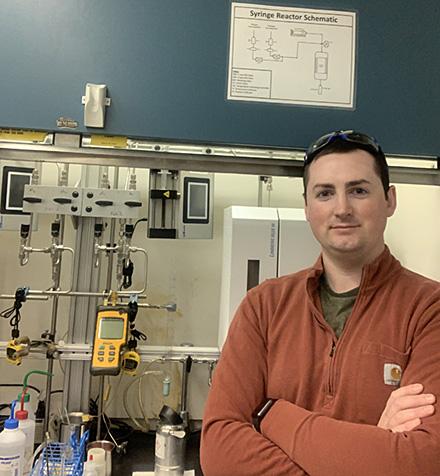Corn: Food, Fuel, and Now … Fiber Too?

Researchers believe that ethanol and paper pulp byproducts can be transformed into the polymer precursors of high-tech synthetic fabrics; these fibers can fetch a premium in the marketplace, and be turned into popular performance garments for outdoors and sports uses, among others. (Photo courtesy of Getty Images)
Corn has long been one of America’s iconic crops. What not everyone realizes about this staple grain, though, is that the vast majority of it is not eaten by humans. According to the USDA’s Economic Research Service, last year 44% of the U.S. corn crop was used for animal feed, and another 44% for ethanol – a share that has been steadily growing for the past 40 years. Ethanol has been heralded as a cleaner biobased fuel for motor vehicles, but it still has environmental costs: for each gallon of ethanol produced, roughly six pounds of carbon dioxide are released as waste. Given the expanding role of ethanol, many people want to know if there’s a way to reduce or eliminate this planet-warming byproduct of the process.
Evan Wegener is a research chemical engineer at the ARS National Center for Agricultural Utilization Research, Renewable Product Technology Research Unit in Peoria, IL, who just may have an answer. He is leading an experimental project to determine whether ethanol byproducts could be combined with another industrial byproduct from paper mills to produce something more useful, and less harmful, than carbon dioxide. The project is one of three winning concepts in ARSX, an annual competition that incentivizes researchers to propose high-risk, high-reward ideas that cross disciplines and break boundaries to solve our most pressing challenges. The 2022 theme, "Innovations for a Circular Economy in Agriculture," focused on “ideas that will help to make a paradigm shift from a linear to a circular economy in agriculture.” The idea is to put all products of the agricultural process to continuing use and reuse in beneficial ways, creating an ongoing virtuous cycle.
Wegener and his team hope to bring this concept to their work by diverting the industrial byproducts from their current pathway. “Instead of breaking down and just getting vented as CO2,” he said, they could give the byproducts, “a much longer life.” To do so, they would transform them into chemical precursors for polyester and nylon. Those high-value fibers could become sports clothing or a winter jacket that might last for decades, or more, with emerging recycling/upcycling practices.
The project has its origins in research that began nearly 40 years ago – and then dried up. Wegener and his colleagues are re-visiting the original research, adjusting it with the aid of more recent innovations in similar chemical reactions – developments that have fueled their confidence in finding a novel solution. “You need to come up with a clever way to direct how the reaction progresses,” Wegener explained, “a play on traditional chemistry to combine feedstocks that typically couldn’t be combined.”

ARS research chemical engineer Evan Wegener in front of chemical reactors in the lab. (Photo courtesy of Evan Wegener, D5099-1)
Wegener readily admits that his project is a bit riskier than his typical work but, “there’s a lot of scientific basis, in my mind, for this to work,” he said. “If it works, I think this could be a truly disruptive technology – something out-of-the-box and novel that could get stakeholders excited early on.”
The challenge, according to Wegener, is twofold: “What we’re really hoping to do with this project is, first, to demonstrate you can actually do this chemistry, and then, to convert that batch system into a continuous process; that would be the proof-of-concept design we would take to someone in industry.” In other words, once researchers have shown that the chemical reaction can be run successfully in a lab, they must translate it into something that would be feasible on a commercial scale.
When it comes to that next stage of commercial development, Wegener notes that his team’s location in Peoria, near several of the largest ethanol plants, positions them well to find corporate partners. He believes the economic value of the end product will drive adoption by consumers and businesses.
“If we target some of these specialty polymer applications, we think we can really come up with a high-value product that people are willing to buy,” he said. “Based on selling prices of similar things, we think this would generate about $20/kg, and so compared to, at best, 15-20¢/kg for capturing CO2, this is a 100-fold increase in the value of CO2.”
The result is a win-win, generating value by reducing waste. “Converting these byproducts to create something useful really increases the efficiency of our agricultural processes,” Wegener said.– Kathryn Markham, ARS Office of Communications
You May Also Like:

